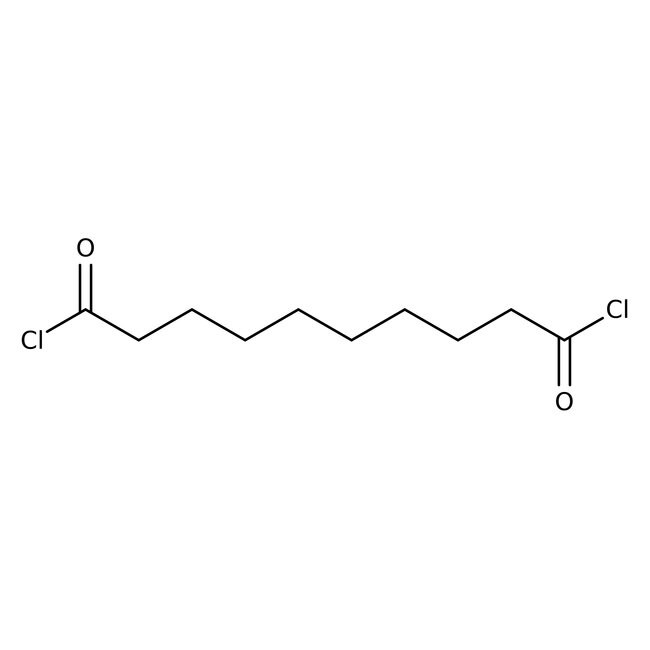Search Thermo Fisher Scientific
Chlorure de sébacoyle, 97 %, Thermo Scientific Chemicals



Chlorure de sébacoyle, 97 %, Thermo Scientific Chemicals
Identifiants chimiques
Spécifications
Description
This Thermo Scientific Chemicals brand product was originally part of the Alfa Aesar product portfolio. Some documentation and label information may refer to the legacy brand. The original Alfa Aesar product / item code or SKU reference has not changed as a part of the brand transition to Thermo Scientific Chemicals.
Le chlorure de sébacoyle est utilisé dans la synthèse du polymère de nylon-6,10 en réagissant avec l’hexaméthylènediamine. Il est également utilisé pour préparer l’ester bis-(3-diméthylamino-propyl) d’acide décanedioïque en présence de triéthylamine comme catalyseur. Il est utilisé comme intermédiaire dans la synthèse chimique. Il participe à la production de microcapsules en polyamide par polycondensation de la p-phénylènediamine avec du chlorure de sébacoyle à l’aide d’un agent de réticulation de diéthylènetriamine (DETA) et d’acide oléique comme plastifiant.
Solubilité
Miscible aux hydrocarbures et aux éthers.
Remarques
Stocker dans un endroit frais. Sensible à l’humidité. Gardez le récipient hermétiquement fermé dans un endroit sec et bien ventilé. Incompatible avec l’eau, les acides, les bases, les amines, les alcools et les agents oxydants.
Figures
Documentation et téléchargements
Certificats
Foire aux questions (FAQ)
Citations et références
Sécurité et manipulation
Classification of the substance or mixture
CLP classification - Regulation(EC) No 1272/2008
Label Elements
Signal Word
Danger
Hazard Statements
H302 - Harmful if swallowed
H310 - Fatal in contact with skin
H314 - Causes severe skin burns and eye damage
EU Specific Hazard Statements
EUH029 - Contact with water liberates toxic gas
Precautionary Statements
P280 - Wear protective gloves/protective clothing/eye protection/face protection
P301 + P330 + P331 - IF SWALLOWED: Rinse mouth. Do NOT induce vomiting
P303 + P361 + P353 - IF ON SKIN (or hair): Take off immediately all contaminated clothing. Rinse skin with water or shower
P305 + P351 + P338 - IF IN EYES: Rinse cautiously with water for several minutes. Remove contact lenses, if present and easy to do. Continue rinsing
P310 - Immediately call a POISON CENTER or doctor/physician